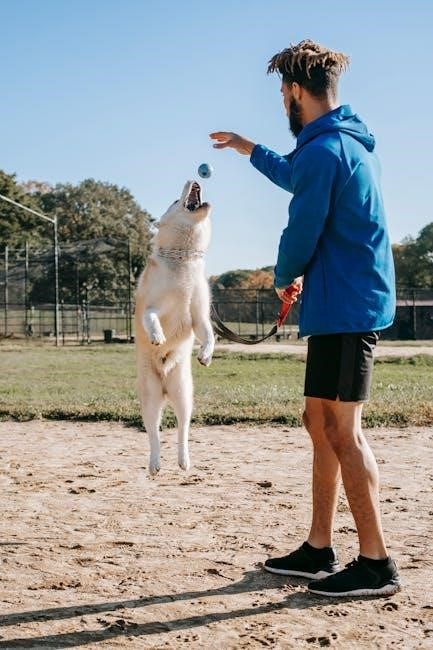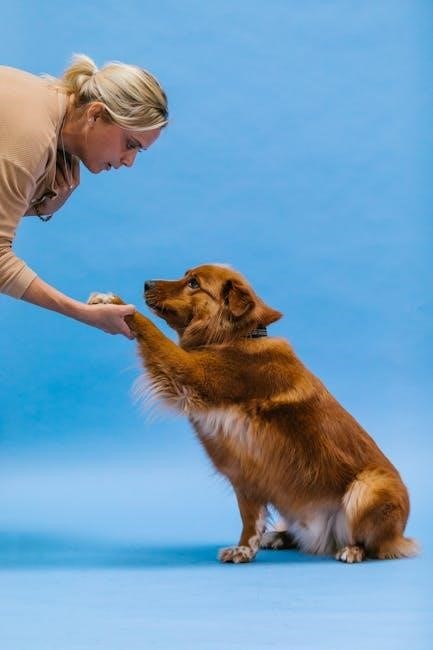
instructions to trick or treaters nyt
Trick-or-Treating Etiquette: A Comprehensive Guide
Embark on a delightful Halloween adventure with our guide! This resource unveils the essential do’s and don’ts for a respectful and enjoyable trick-or-treating experience. From costume choices to treat-taking, we cover it all to ensure a memorable night.
Trick-or-treating, a beloved Halloween tradition, involves costumed individuals traversing neighborhoods, seeking treats from welcoming homes. Rooted in ancient Celtic customs, it has evolved into a fun-filled activity for children and adults alike. While primarily associated with kids, the spirit of Halloween encourages participation at all ages, fostering community engagement. Whether door-to-door in suburban streets or store-to-store in urban settings, trick-or-treating offers a chance to embrace the spooky season. Remember to stay safe, be respectful, and enjoy the thrill of the hunt for sweets and surprises on this enchanting night.
The Basics of Trick-or-Treating Etiquette
Master the art of Halloween manners! This section outlines essential etiquette tips, ensuring a respectful and enjoyable experience for both trick-or-treaters and homeowners. Kindness and gratitude are key to a successful night.
Saying “Trick or Treat” and “Thank You”
The cornerstone of trick-or-treating etiquette lies in these simple phrases. “Trick or treat” is the traditional greeting, while a sincere “thank you” is essential upon receiving a treat. Always say “Trick or Treat” when approaching a house and “Thank You” when receiving the treat and leaving. Never be rude, disrespectful, unkind, or make faces about what has been given. These expressions of gratitude and respect foster positive interactions and spread Halloween cheer.
Appropriate Costume Choices
Selecting a suitable costume is crucial for a positive trick-or-treating experience. Costumes should be age-appropriate and avoid being overly revealing or offensive. Consider costumes that are respectful and celebrate the fun of Halloween. For children, princesses, fairies, and cartoon characters are excellent choices. Ensure costumes are safe, allowing for clear visibility and ease of movement to prevent accidents. Aim for costumes that spread joy and contribute to the festive atmosphere of the evening.
Taking Only One Item (Unless Offered More)
Demonstrating good manners is essential when receiving treats. Always take only one item from the candy bowl unless explicitly offered more by the homeowner. This ensures that there are enough treats for all trick-or-treaters. If you desire an additional piece, politely ask, “May I have one more piece?” Refrain from grabbing multiple items or being greedy. Showing restraint and consideration for others will enhance the trick-or-treating experience for everyone involved. Remember, politeness and respect go a long way on Halloween night.

Trick-or-Treating for Kids
Halloween is especially magical for children. Discover essential tips for kids to have a safe and enjoyable trick-or-treating experience, including roleplaying etiquette and the importance of adult supervision throughout the neighborhood.
Roleplaying Etiquette Beforehand
Prior to embarking on your trick-or-treating adventure, engage in a fun and educational roleplaying session with your kids. Practice approaching a house, saying “Trick or treat!” clearly and politely, and expressing gratitude with a sincere “Thank you!” This exercise will help them feel more confident and prepared when interacting with homeowners. Simulate different scenarios, such as being offered a choice of treats or encountering a friendly pet, to ensure they know how to respond appropriately. Reinforce the importance of good manners and respect for others’ property during their candy quest.
Supervision of Children
For younger trick-or-treaters, constant parental supervision is paramount. Accompany your children as they navigate the neighborhood, ensuring their safety and reinforcing proper etiquette. Hold their hands when crossing streets, and guide them along sidewalks to prevent accidents. Be vigilant about potential hazards, such as uneven pathways or unleashed pets. Encourage them to stay with the group and avoid wandering off alone. Your presence not only safeguards them physically but also allows you to model courteous behavior and offer gentle reminders about manners, making the experience safe and enjoyable for everyone involved in the Halloween fun.
Trick-or-Treating for Adults
Adults can embrace Halloween fun too! Explore the etiquette surrounding adult participation in trick-or-treating. Discover appropriate venues and activities for grown-ups to enjoy the spooky spirit responsibly and respectfully within the community.
Is There an Age Limit?
The question of an age limit for trick-or-treating often arises. While traditionally a children’s activity, there isn’t a strict age cutoff. However, older teens and adults participating should be mindful and respectful. Costumes should be appropriate, and the focus should remain on community fun, not excessive candy collection. Some communities might have local ordinances, so checking those is advisable. Adult trick-or-treating is often embraced within the context of costume parties or organized pub crawls, maintaining the spirit of Halloween in a different way.
Adult Costume Parties and Pub Crawls
For adults, Halloween fun often takes the form of costume parties and pub crawls. These events provide a festive atmosphere to celebrate the holiday. Etiquette is still important; costumes should be respectful and considerate. While revelry is encouraged, moderation is key, especially in public settings. Participating responsibly ensures everyone enjoys the night. Remember to arrange for safe transportation. These gatherings offer a grown-up twist on trick-or-treating, blending costumes, socializing, and themed festivities, all while maintaining a sense of Halloween spirit and community.
Trick-or-Treating for Homeowners
Homeowners play a crucial role in Halloween celebrations. By following simple guidelines, residents can create a safe and welcoming trick-or-treating environment. This section covers how to signal participation, ensure safety, and choose treats wisely;
Signaling Participation (Lights On/Off)
Clear communication is key on Halloween night. A universally understood signal indicates whether a home is participating in trick-or-treating. Turning on your porch light is the simplest and most effective way to welcome trick-or-treaters to your door, signaling that you have treats to share and enjoy the Halloween spirit. Conversely, turning off your lights, including porch lights and any decorative lighting, is a polite way to indicate that you are not participating or are out for the evening, preventing unnecessary disturbances.
Safe Environment for Trick-or-Treaters
Creating a secure environment is paramount for a successful Halloween night. Homeowners should ensure their walkways are clear of obstructions like decorations, garden hoses, or uneven pavement to prevent trips and falls. Consider using battery-operated candles in jack-o’-lanterns instead of open flames to avoid fire hazards. Keep pets indoors to prevent any unexpected scares or incidents. Ensure any outdoor lighting is adequate, illuminating the path to your door. By taking these precautions, you contribute to a safer and more enjoyable experience for all trick-or-treaters visiting your home.
Acceptable Treats to Distribute
Offering a variety of treats can cater to different preferences and dietary needs. Individually wrapped, commercially produced candies are always a safe and popular choice. Consider offering allergy-friendly options like stickers, small toys, or pencils for children with allergies. Avoid homemade treats unless you personally know the recipients; Ensure all treats are in their original packaging and unexpired. Steer clear of choking hazards for younger children, such as small hard candies or gum. Providing a mix of sweet and non-sweet options will make your house a hit with all trick-or-treaters!

Trick-or-Treating Times
Timing is key for a successful Halloween night. Be aware of official hours and local ordinances to avoid any disruptions. Respecting the designated timeframe ensures a safe and enjoyable experience for everyone involved.
Official Hours and Local Ordinances
Many communities establish specific trick-or-treating hours, often aligning with sunset and concluding around 9 p.m. Check local news, social media, or city websites for official times in your area, as these can vary. Some towns may have ordinances regarding age limits or mask-wearing after certain hours. Adhering to these guidelines ensures safety and respect for residents. Remember that weather can sometimes influence date or time changes, so always confirm details with local authorities to avoid any surprises and ensure a fun, lawful Halloween.
Respecting End Times
As the evening progresses, it’s crucial to be mindful of the designated end time for trick-or-treating, typically around 9 p.m. Continuing to knock on doors after this hour can be disruptive and inconsiderate to homeowners. Even if enthusiasm remains high, respecting the established timeframe demonstrates good manners and consideration for the community. Encourage children to finish their rounds promptly and transition to other Halloween activities. By honoring these boundaries, everyone can enjoy a peaceful and enjoyable conclusion to the Halloween festivities, fostering positive community relations and goodwill.

Alternative Trick-or-Treating Options
Explore diverse Halloween fun beyond traditional door-to-door trick-or-treating! Discover exciting alternatives like trunk-or-treat events and store-to-store trick-or-treating, offering inclusive and safe environments for all ages to enjoy the spooky season.
Trunk-or-Treat Events
Trunk-or-treat events offer a centralized and community-focused alternative to traditional trick-or-treating. Participants decorate the trunks of their cars with Halloween themes and distribute treats from them. These events often take place in school or church parking lots, creating a safe environment for children to trick-or-treat. This is very popular in rural areas, where houses are more spread out. Trunk or treating often takes place in church or school parking lots. It’s a great way to enjoy the Halloween spirit.
Store-to-Store Trick-or-Treating
Store-to-store trick-or-treating provides a safe and convenient alternative, especially in urban areas. Small businesses, shopping centers, and even malls participate by offering Halloween goodies. This option allows children to trick-or-treat in a well-lit, supervised environment. This is a fun alternative for those living in city environments. It also encourages community engagement as families visit local businesses. Always be polite and thank the store owners for their treats. This creates a fun and safe experience for everyone!

Safety Considerations
Prioritize safety during trick-or-treating. Check all treats for tampering. Ensure visibility with reflective gear. Consider allergy-friendly options to include everyone. These simple steps contribute to a secure and enjoyable Halloween night for all participants.
Checking Treats for Tampering
Upon returning from trick-or-treating, thoroughly inspect all collected treats. Dispose of any items that appear unwrapped, damaged, or have suspicious packaging. Be particularly cautious of homemade treats from unfamiliar sources. While tampering is rare, prioritize caution. Parents should carefully examine candies before allowing children to consume them, ensuring a safe and worry-free Halloween. If a treat looks questionable, it’s best to discard it to prevent potential risks. This simple step safeguards your child’s well-being and maintains the fun spirit of the holiday. Remember, when in doubt, throw it out.
Visibility and Reflective Gear
Enhance safety during trick-or-treating by prioritizing visibility. As dusk sets, equip children with flashlights or glow sticks to illuminate their path. Incorporate reflective tape onto costumes and treat bags to increase visibility to drivers and pedestrians. Choose bright-colored costumes to further stand out in the dim light. Ensure that masks do not obstruct vision, and consider face paint instead. Staying visible reduces the risk of accidents and makes the experience safer and more enjoyable. A well-lit trick-or-treater is a safer trick-or-treater, allowing for worry-free fun throughout the Halloween night.
Allergy-Friendly Options (Teal Pumpkins)
Promote inclusivity by offering allergy-friendly alternatives. The Teal Pumpkin Project signals homes with non-food treats like stickers or small toys. This simple gesture allows children with allergies or dietary restrictions to participate safely. Stock up on items like crayons, bubbles, or temporary tattoos to cater to diverse needs. Clearly mark your teal pumpkin to inform trick-or-treaters of the options available. This thoughtful approach ensures that Halloween is a fun and welcoming experience for everyone in the community, regardless of allergies or dietary considerations. By embracing teal pumpkins, you spread joy and consideration.


Leave a Reply
You must be logged in to post a comment.